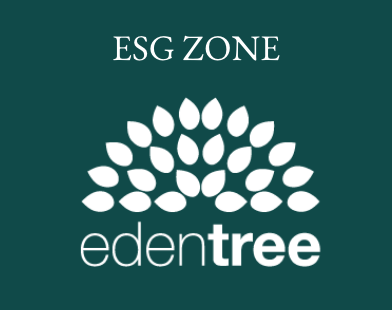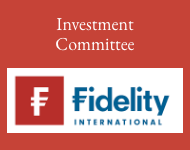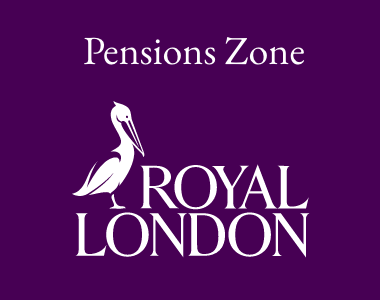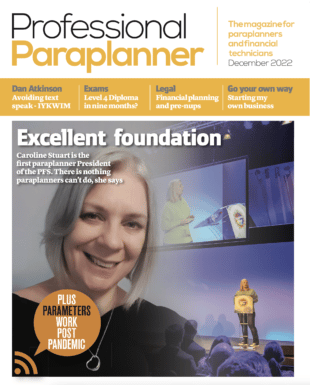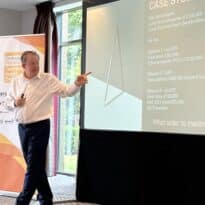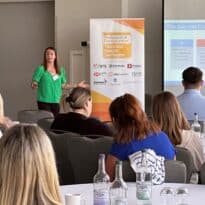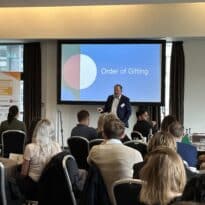Three things can get in the way of writing clear, client friendly and compliant reports, says Melissa Kidd, director of Motem Ltd. Here’s how to deal with them.
Clear communication is at the heart of the Consumer Duty. I wanted to share what I have noticed whilst running my Communicate for Impact courses because it’s very relevant to Consumer Duty.
1. Mindset – “I have to prove how much I know so that I build trust”
This is a common thought among paraplanners who are relatively early in their career. And I get it. You’ve taken a lot of exams where you’re encouraged to show how much you know – it’s quite a gear change to then communicate in a different way.
Very often this mindset is coming from a well-meaning place. You want the client to trust you. But trust is actually rarely unpacked into its constituents. Trust is made up of two important ingredients – competence and benevolence. And very often paraplanners are focused on the competence element and forget about the benevolence.
A couple of years ago, I was looking to buy a camper van. I’d done some research and then one came up on Gumtree. As I drove down to Dorset on my own, I thought this is a bad situation. I’m on my own, know NOTHING about engines, have no clue what I should be asking or looking at. I am DEFINITELY going to get ripped off. And I was running through how I might give the impression that I did actually know all there was to know about VW vans and that I was not someone to mess with.
But as soon as I got there, he showed me the van and instantly went through all the things that were wrong with it, scratches, broken light, missing floor mat. I couldn’t believe it. And instantly trusted him.
Now you might be thinking that’s a good trick for a second-hand car sales man, who is out to swindle someone. But my instinct was that he was a good guy and I bought the van on the spot and haven’t had any trouble with it.
How else might you develop trust?
Another easy win is to use the clients’ own words. It demonstrates you’ve been listening and therefore the advice you give is more likely to be suitable.
Not only that, when we adopt this “I have to prove how much I know” mindset, we end up including all kinds of complex explanations and jargon, we also risk making our client feel alienated and stupid.
So, what can we replace it with?
When writing your report: “hold your client – especially what they care about – in your mind”.
Many paraplanners I know will ask themselves, will my Mum or Dad understand this?
And as Quiet Room say: “Assume knowledge but not experience”.
Another way to catch it is to – ask yourself who am I writing this for – is it for the client? Or is it to impress them or win approval?
There can be an assumption that a long, complicated report delivers more value. It shows off your expertise and therefore there is proof that you’ve earnt your fees.
It doesn’t.
Remember people care about results not process.
I’d encourage you to adopt this new approach if you don’t already:
2. A skill gap: clear, simple and meaningful writing
It does take time and effort to write in a new way.
This is partly down to the “curse of knowledge” – we forget what it’s like not to know what we know, so we slip into using abstract terms that are commonplace for us but are not for clients.
I think it’s also sometimes due to concepts not being straight in the paraplanners mind. Remember: Clear writing comes from clear thinking.
Here are some rules of thumb that I include in the Communicate for Impact programme:
- Keep sentences short. By short I mean around 11 words – no more than 20.
- Keep one idea per sentence. This means it’s much easier for your client to process and understand what you’re conveying.
- Write from client’s perspective. A quick way to do this is to use “you” and “your” more often. Participants on the course notice for example if they put YOUR pension or YOUR investments into their email subject line they get a much quicker response rate than if they left it out. There’s more to it than that, but that’s certainly a quick win.
Every word has to earn its right to be on the page.
3. A fear: “I’m worried about leaving something out which means the client can’t make a fully-informed decision and I run the risk of non compliance.”
Mel Holman of CATS makes the important point that from a compliance perspective you need to ensure that the client objectives, your recommendations and why they meet the objectives, disadvantages and costs are in there. There are some additional requirements around pensions but that’s pretty much it.
However, she says that we need to be more concerned about complaints being made to and upheld by the Financial Ombudsman Service (FOS). You might think that those who work at FOS have a diploma or other financial qualification but that is unlikely. It’s made up of a whole range of professionals from all walks of life: ballet dancers, opera singers and plumbers. And if they can’t understand the reports or advice then the complaint is likely to be upheld. This means that your reports have got to be crystal clear.
For those of you who use templates – adjust the settings to make it more personal. When products are selected and it automatically populates the report with information – you don’t need to keep repeating that same information. So do delete repeated information to make it more engaging. You also don’t need to include information about them being married, age where they live. This doesn’t make for an impactful start or an engaging read.
I shall be co-hosting a session with Mel at the Festival of Financial Planning on “How to write reports that clients want to read” on Tuesday 1 November. Maybe we will see you there?
Communicate for Impact is an online self-paced programme, specifically for financial advisers, paraplanners and support staff. It includes 6 steps which have shown to increase efficiency, engagement and confidence. More information can be found at www.motem.co.uk



